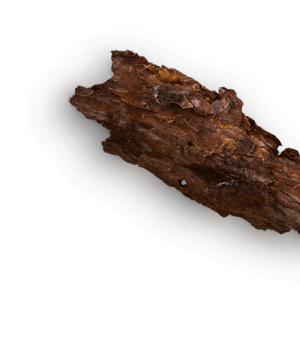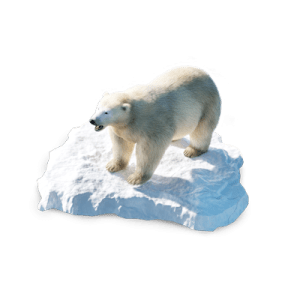
Overview
In this thought starter, students explore perspectives on sustainability, and then use two-eyed seeing to identify the strengths of Western and Indigenous perspectives on sustainability. Students suggest how two-eyed seeing might be used to help make more sustainable decisions and actions.
Instructions
What you'll need
- "Thinking about sustainability" worksheet, one per student
- Briefing Sheet A: "Western perspectives on sustainability," one per student
- Briefing Sheet B: "Indigenous Peoples’ perspectives on sustainability," one per student
- Begin the activity by inviting your students to react to a quote about sustainability: Do they agree or disagree with the main idea of the quote? “Sustainability means using natural resources to make the things that people need, and to make sure that business keep making money.” Encourage students to share their decisions and thinking with the class.
- Ask your students to suggest how they would define sustainability. As they share their ideas, provide each students with a copy of the "Thinking about sustainability" worksheet and invite them to record their initial thoughts in the space provided.
- Provide each of your students with a copy of the "Western perspectives on sustainability" briefing sheet. Encourage students to read each perspective and to select at least three powerful ideas about the meaning of sustainability. Prompt students to note their selections on the left-hand side of the "Thinking about sustainability" worksheet, and invite them to share their thinking with the class.
- Provide each of your students with a copy of the "Indigenous Peoples’ perspectives on sustainability" briefing sheet. Invite them to read the perspectives and identify at least three powerful ideas about the meaning of sustainability. Prompt students to note their choices on the right-hand side of their worksheet, and invite them to share their thinking with the class. Guide students in discussing the most important similarities and differences between Western and First Peoples’ perspectives on sustainability.
- Introduce the concept of Etuaptmumk or two-eyed seeing to your students. Briefly explain that it is when we learn to see from one eye the strengths of Western knowledges and ways of knowing, and from the other eye see the strengths of First Peoples’ knowledges and ways of knowing, and then learning how to use both of these eyes together to use the strengths of both ways of knowing to benefit everyone.
- Guide your students’ attention back to the worksheet and ask them to select the three most powerful ideas that can be used to describe sustainability. Remind them to use two-eyed seeing to choose the most powerful ideas from Western and Indigenous perspectives, and to note their selections in the middle of the worksheet.
- Ask your students to revisit their first thoughts about the meaning of sustainability. Encourage them to add, change, or refine their initial definition, this time using the powerful ideas that have been explored during this activity.
- To conclude the activity, invite your students to suggest how two-eyed seeing might help them make more sustainable decisions and actions.
Modify or extend this activity
Modification
- Different understandings of sustainability might also be explored in this activity. After using the three perspectives provided in the activity, consider using students’ knowledge to explore other perspectives on sustainability.
Extensions
- Using appropriate protocols, invite an Elder into your class to talk about local Indigenous knowledges of sustainability.
- Ask your students to assess a current energy project using the various perspectives on sustainability (for example, the construction of a pipeline). Would the project be viewed as sustainable from Western perspectives? From Indigenous Peoples’ perspectives? What if the project is viewed using two-eyed-seeing?
Curriculum Fit
Environmental Science 11
Big idea
- Humans can play a role in stewardship and restoration of ecosystems
Content
- First Peoples’ knowledge and other traditional ecological knowledge in sustaining biodiversity
- Benefits of ecosystem services
- Human actions and their impact on ecosystem integrity
- First Peoples ways of knowing and doing
- Resource stewardship
- Restoration practices
Curricular competencies
Questioning and predicting
- Demonstrate a sustained intellectual curiosity about a scientific topic or problem of personal, local, or global interest
Processing and analyzing data and information
- Apply First Peoples perspectives and knowledge, other ways of knowing, and local knowledge as sources of information
- Analyze cause and effect relationships
Evaluating
- Demonstrate an awareness of assumptions, question information given, and identify bias in their own work and in primary and secondary sources
- Consider changes in knowledge over time as tools and technologies have developed
- Consider social, ethical and environmental implications of the finding from their own and others’ investigations
Applying and innovating
- Contribute to care for self, others, community, and world through individual or collaborative approaches
- Contribute to finding solutions to problems at a local and/or global level through inquiry
- Implement multiple strategies to solve problems in real-life, applied and conceptual situations
Communicating
- Communicate scientific ideas and information, and perhaps a suggested course of action, for a specific purpose and audience, constructing evidence-based arguments and using appropriate scientific language, conventions, and representations
- Express and reflect on a variety of experiences, perspectives, and worldviews through place
Environmental Sciences 12
Big idea
- Living sustainably supports the well-being of self, community, and Earth
Content
- Personal choices and sustainable living
Curricular competencies
Questioning and predicting
- Demonstrate a sustained intellectual curiosity about a scientific topic or problem of personal, local, or global interest
Processing and analyzing data and information
- Apply First Peoples perspectives and knowledge, other ways of knowing, and local knowledge as sources of information
- Analyze cause and effect relationships
Evaluating
- Demonstrate an awareness of assumptions, question information given, and identify bias in their own work and in primary and secondary sources
- Consider changes in knowledge over time as tools and technologies have developed
- Consider social, ethical and environmental implications of the finding from their own and others’ investigations
Applying and innovating
- Contribute to care for self, others, community, and world through individual or collaborative approaches
- Contribute to finding solutions to problems at a local and/or global level through inquiry
- Implement multiple strategies to solve problems in real-life, applied and conceptual situations
Communicating
- Communicate scientific ideas and information, and perhaps a suggested course of action, for a specific purpose and audience, constructing evidence-based arguments and using appropriate scientific language, conventions, and representations
- Express and reflect on a variety of experiences, perspectives, and worldviews through place
Assessments
Throughout this activity, assess your students’ ability to:
- Respectfully consider other perspectives.
- Determine significant similarities and differences.
- Explain the reasoning behind their decisions.
Teaching Notes
More information about the concept of two-eyed seeing can be found at:
- University Affairs: "The gift of multiple perspectives in scholarship"
- Institute for Integrative Science & Health: "Two-Eyed Seeing"
How this activity was developed
These materials were created with guidance from Indigenous educators, subject matter experts and thought leaders to help draw upon important teachings, learnings, and Indigenous perspectives.
For centuries, the traditional western view of water has often been focused on its value as a resource. Indigenous people have a unique relationship with the waters of British Columbia. Since time immemorial, water has played a sacred role and is seen as a living entity. How water is used must be carefully considered with a view towards not just the immediate need and impact, but the needs and perspectives of generations to follow.
We are dedicated to deep listening and respectfully highlighting Indigenous ways of knowing in the materials we provide B.C. educators. If you have any feedback for us on these activities, or suggestions for others, please email schools@bchydro.com. We would love to hear from you.
About the artist
The design of the worksheets in this activity was a collaborative effort with Indigenous artist Kelli Clifton. Kelli Clifton was born and raised in Prince Rupert, British Columbia and is Gitga’at from the community of Hartley Bay. Clifton is interested in using her artwork as a form of storytelling—especially in relation to her Ts’msyen language (Sm’algyax), her coastal upbringing and her experiences as an Indigenous woman. Clifton currently lives in her home community where she continues to practice her art and teaches Sm’algyax at a local high school. Learn more about Clifton's art on her Facebook page.
BC Hydro’s commitment to reconciliation
BC Hydro exists to serve British Columbians by providing clean, reliable and affordable electricity. We recognize that maintaining and developing the system has impacts on the lives and interests of Indigenous People. To support our move towards true and lasting reconciliation, BC Hydro will acknowledge past wrongs, listen to Indigenous perspectives and seek shared understanding with First Nations communities and governments.
Learn more about our Statement of Indigenous Principles.







